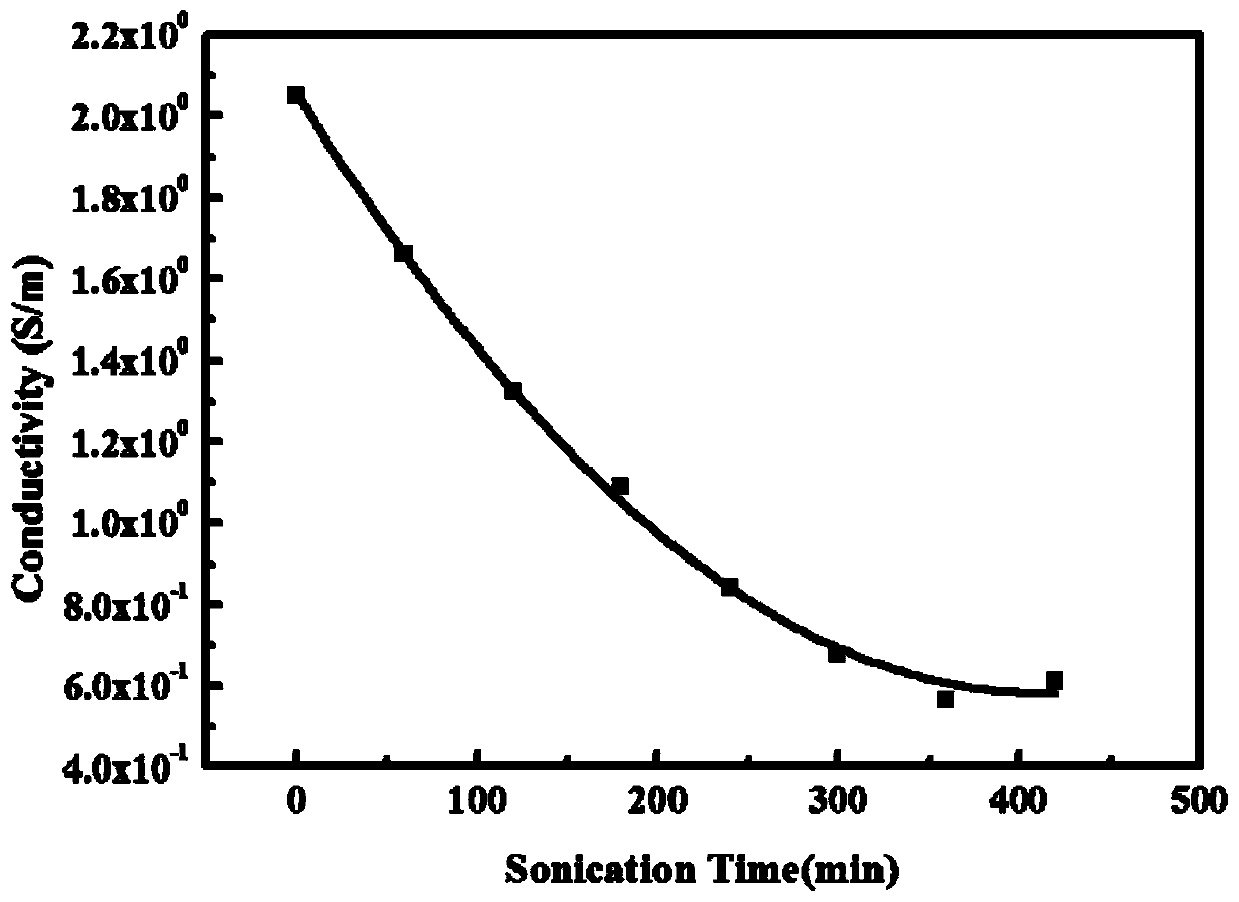A kind of polymer conductive fabric modified by graphene based on thermal reduction method and its preparation method
A polymer conductive and graphene technology, applied in textiles and papermaking, fiber types, fiber processing, etc., can solve the problems of complex processes, many processes, conductive fibers and more conductive nanomaterials, etc., to achieve simple preparation methods and good durability. , the effect of strong operability
- Summary
- Abstract
- Description
- Claims
- Application Information
AI Technical Summary
Problems solved by technology
Method used
Image
Examples
Embodiment 1
[0026] 0.5 g of graphene oxide was added to 50 g of a 50% ethanol aqueous solution by mass fraction to prepare a graphene oxide suspension. The polyphenylene sulfide fabric was soaked in the graphene oxide suspension for 5 minutes, and then the soaked polymer fabric was dried in a blast oven at 90°C for 5 minutes, and the above soaking-drying process was repeated 10 times. Put the high-temperature-resistant polymer fabric that has undergone the soaking-drying process in a tube furnaceN 2 Heating at 200° C. for 2 hours under the atmosphere, the graphene oxide is thermally reduced to graphene, that is, a polymer conductive fabric is prepared. The electrical conductivity of the fabric was 0.0133 S / cm. In this embodiment, the surface morphology before and after fabric modification is as follows figure 1 shown.
Embodiment 2
[0028] 1 g of graphene oxide was added to 50 g of an 80% aqueous acetic acid solution by mass fraction to prepare a graphene oxide suspension. The polyphenylene sulfide fabric was soaked in the graphene oxide suspension for 10 minutes, and then the soaked polymer fabric was dried in a blast oven at 90°C for 10 minutes, and the above soaking-drying process was repeated 5 times. Put the high-temperature-resistant polymer fabric that has undergone the soaking-drying process in a tube furnaceN 2 Heating at 250° C. for 3 hours under the atmosphere, the graphene oxide is thermally reduced to graphene, that is, a polymer conductive fabric is prepared. The electrical conductivity of the fabric was 0.0201 S / cm.
Embodiment 3
[0030] 1.5 g of graphene oxide was added to 50 g of acetone aqueous solution with a mass fraction of 60%, to prepare a graphene oxide suspension. The polyetheretherketone fabric was soaked in the graphene oxide suspension for 15 minutes, and then the soaked polymer fabric was dried in a blast oven at 90°C for 5 minutes, and the above soaking-drying process was repeated 10 times. Put the high-temperature-resistant polymer fabric that has undergone the soaking-drying process in a tube furnaceN 2 Heating at 280° C. for 3 hours in the atmosphere, thermally reducing graphene oxide to graphene, that is, preparing a polymer conductive fabric. The electrical conductivity of the fabric was 0.0213 S / cm. The good durability of this prepared fabric, after ultrasonic treatment 420min, electrical conductivity remains on 0.6S / m, and tends toward equilibrium (as figure 2 shown). The prepared fabrics, the yarns in which the mechanical properties remain unchanged at different reduction time...
PUM
| Property | Measurement | Unit |
|---|---|---|
| electrical conductivity | aaaaa | aaaaa |
| electrical conductivity | aaaaa | aaaaa |
| electrical conductivity | aaaaa | aaaaa |
Abstract
Description
Claims
Application Information
 Login to View More
Login to View More - R&D
- Intellectual Property
- Life Sciences
- Materials
- Tech Scout
- Unparalleled Data Quality
- Higher Quality Content
- 60% Fewer Hallucinations
Browse by: Latest US Patents, China's latest patents, Technical Efficacy Thesaurus, Application Domain, Technology Topic, Popular Technical Reports.
© 2025 PatSnap. All rights reserved.Legal|Privacy policy|Modern Slavery Act Transparency Statement|Sitemap|About US| Contact US: help@patsnap.com


